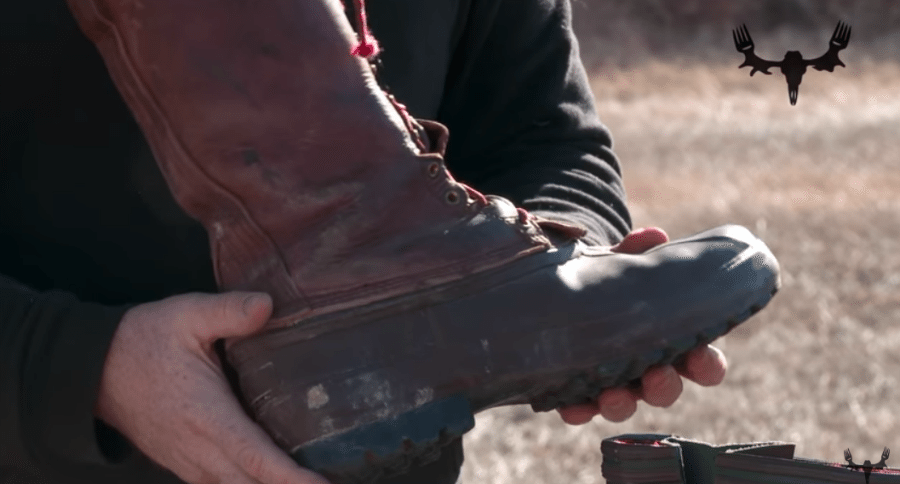Here's the "four boot rule" that explains the different kinds of hunting boots that will be of value to the hunter. Cover these and you're pretty well set.
Dan Doty briefly goes over the "four boot rule" of hunting boots to explain where each of the four basic styles of boot has value to the hunter. It's a good, solid overview that provides you the basic guidelines for what kind of boot to wear for the type and style of hunting you'll be engaging in.
While there are myriad variations and differing features and details within each of the four categories, these are the broad descriptions. Specific features that separate one boot from another within a style are really up to your own preferences.
Doty adds a fifth boot, the wading shoe, to the list, but that is a very specialized kind of boot for specific conditions.
Here are each of the four styles of hunting boot, plus one, and what they have to offer:
- Six-inch leather, uninsulated or lightly insulated hiking boot. A warm-weather boot. Light-weight, comfortable, with a high level of ankle support. Good in mountainous terrain. Good in flat country. Typically worn for things like early season elk hunts or antelope hunts.
- Backpack hunting boot. Insulated, Gore-Tex, tall leather upper, stiff and heavy. This boot has a stiff foot-bed to help you 'sidehill' in steep country. Warm, late season boot. Good for carrying heavy packs or hauling game out out of the backcountry.
- Pac boot. Lightweight, cold weather boot that works well for hiking and action. Insulated for cold weather or sedentary stand hunting, but also good for hiking and heavy activity. The rubber sole offers traction in snow and icy conditions. Leather upper is fairly water repellent and warm. Removable liners offer versatility and the option of changing liners should they get wet. All around good boot.
- Knee-high rubber boot. Scent resistant. Great for wet country hunting (lowcountry, marshland, rainy days). These boots offer no ankle support, and are not good for hiking. You can get them insulated or uninsulated.
- Wading boots. Work as an adjunct to sock waders. A Vibram sole is preferable to a felt sole in cold, icy water. Used primarily when duck hunting.
There you have it. Again, there are many, many different manufacturers and specific features for these boots in each of these basic categories. You'll have to decide what's important to you when choosing what specific hunting boot is good for you.
Like what you see here? You can read more great articles by David Smith at his facebook page, Stumpjack Outdoors.
NEXT: Kifaru Tut Tent Set-Up: Spacious at Under 4 Pounds




